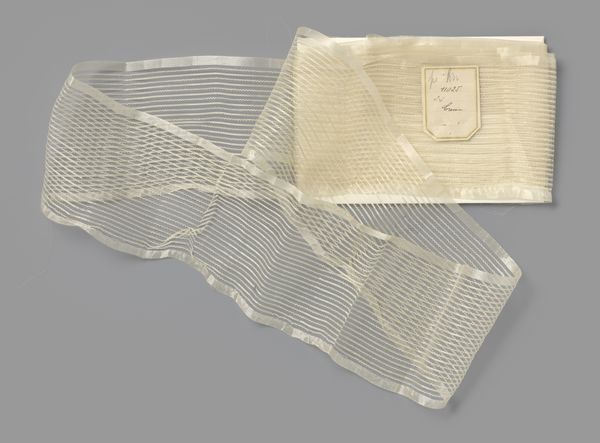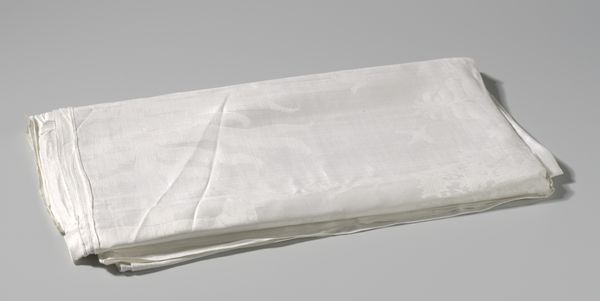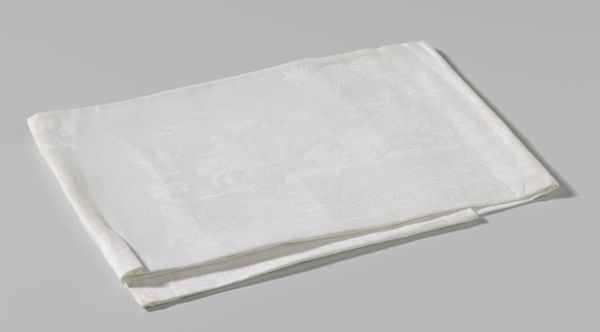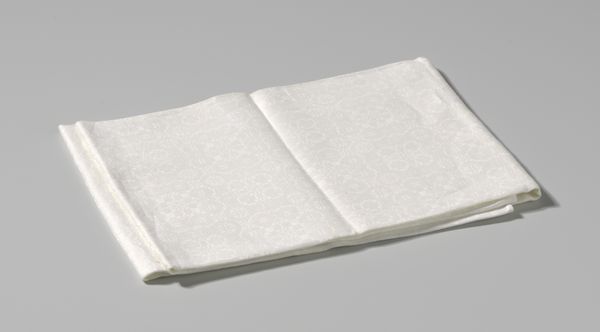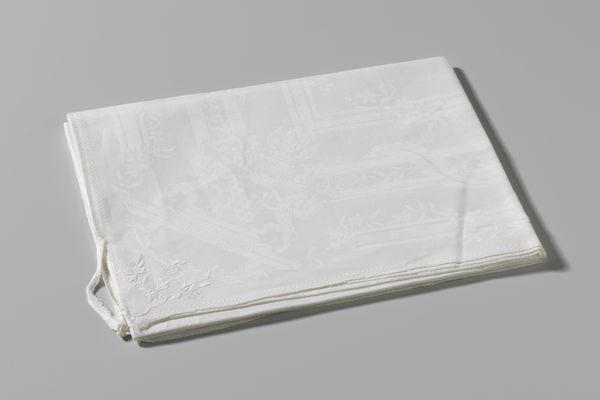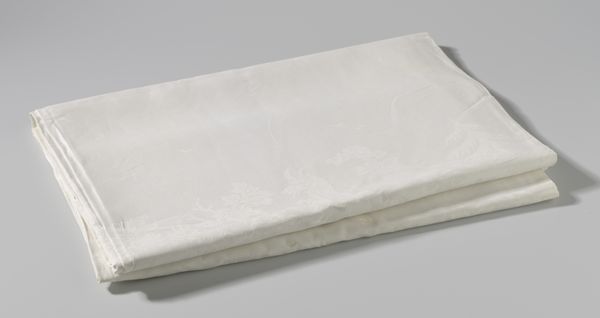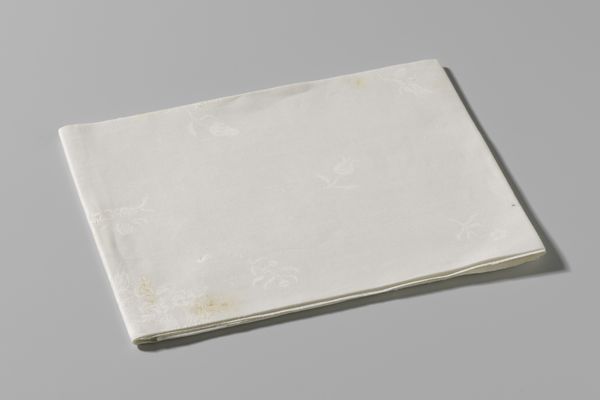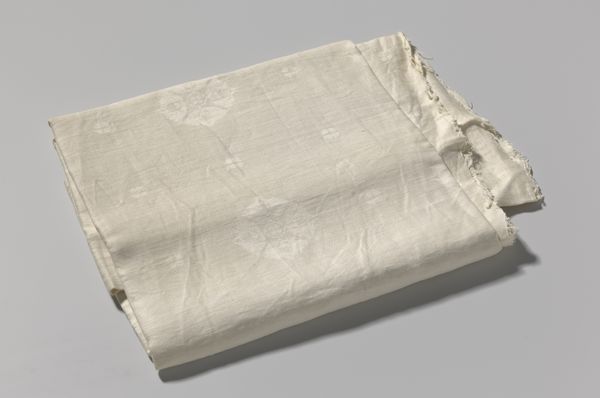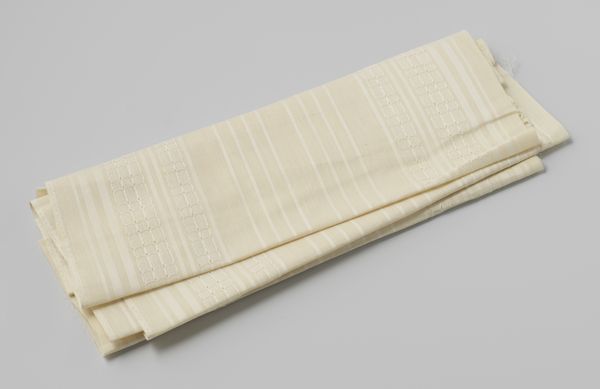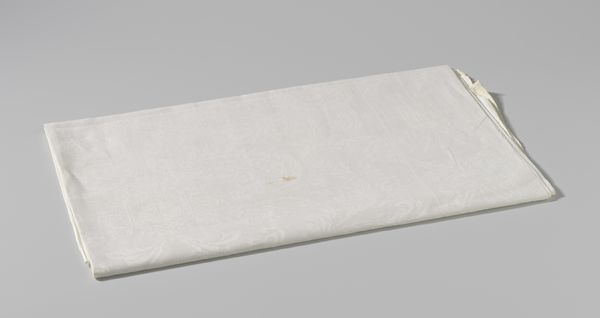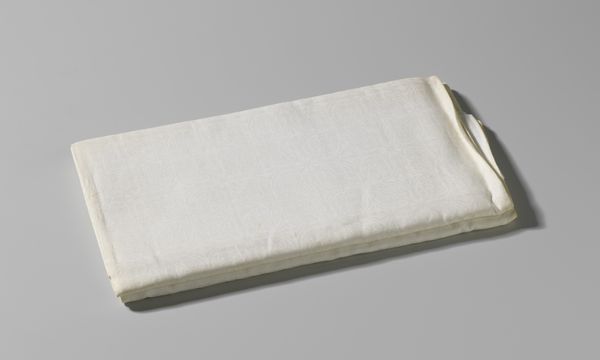
Passement van witte tule met in de schulpen een verenblad, op karton c. 1925
0:00
0:00
gustavschnitzler
Rijksmuseum
mixed-media, collage, textile, photography
#
mixed-media
#
collage
#
textile
#
photography
Dimensions: width 5.5 cm, length 25.2 cm, width 16.4 cm
Copyright: Rijks Museum: Open Domain
Curator: Welcome. Here we have an intriguing mixed-media piece: “Passement van witte tule met in de schulpen een verenblad, op karton," which translates to "Trimming of white tulle with a feather leaf in the scallops, on cardboard.” The artist is unknown, but it's dated around 1925 and comes to us from the Rijksmuseum collection. Editor: My first impression is delicate, almost ethereal. The interplay of textures, from the crispness of the cardboard to the fragile tulle, immediately catches my eye. And that muted color palette contributes to its overall sense of fragility. Curator: The feather leaf motif woven into the tulle is so suggestive, isn't it? Feathers often represent ascent, spirituality, or even a connection to ancestors. Combined with the pristine white, one might interpret it as symbolizing purity or perhaps mourning. Editor: Interesting, because I immediately looked at that scallop pattern and considered it structurally, the rhythm it establishes, how the repetition creates a visual harmony. The leaves, regardless of any symbolic intent, punctuate that rhythm in a very pleasing way. Curator: Indeed. Consider the context. The 1920s were a time of immense social change. Trimmings and adornments like this, originally used on garments and accessories, shifted as reflections of liberation and luxury, holding narratives of the changing female identity and desires. This textile becomes not merely an aesthetic object, but an archive of emotion and aspiration. Editor: Absolutely. And the materiality itself—tulle, cardboard—speaks volumes. The contrast provides a strong framework in tension, an almost assertive background for something so delicate. It prevents it from floating away, so to speak. Curator: Ultimately, it reminds us that even the most seemingly simple objects hold within them intricate webs of meaning. Editor: I'll add that seeing it within the frame pushes viewers to engage not just with history but with elements of texture and form often unnoticed in our everyday surroundings.
Comments
No comments
Be the first to comment and join the conversation on the ultimate creative platform.
